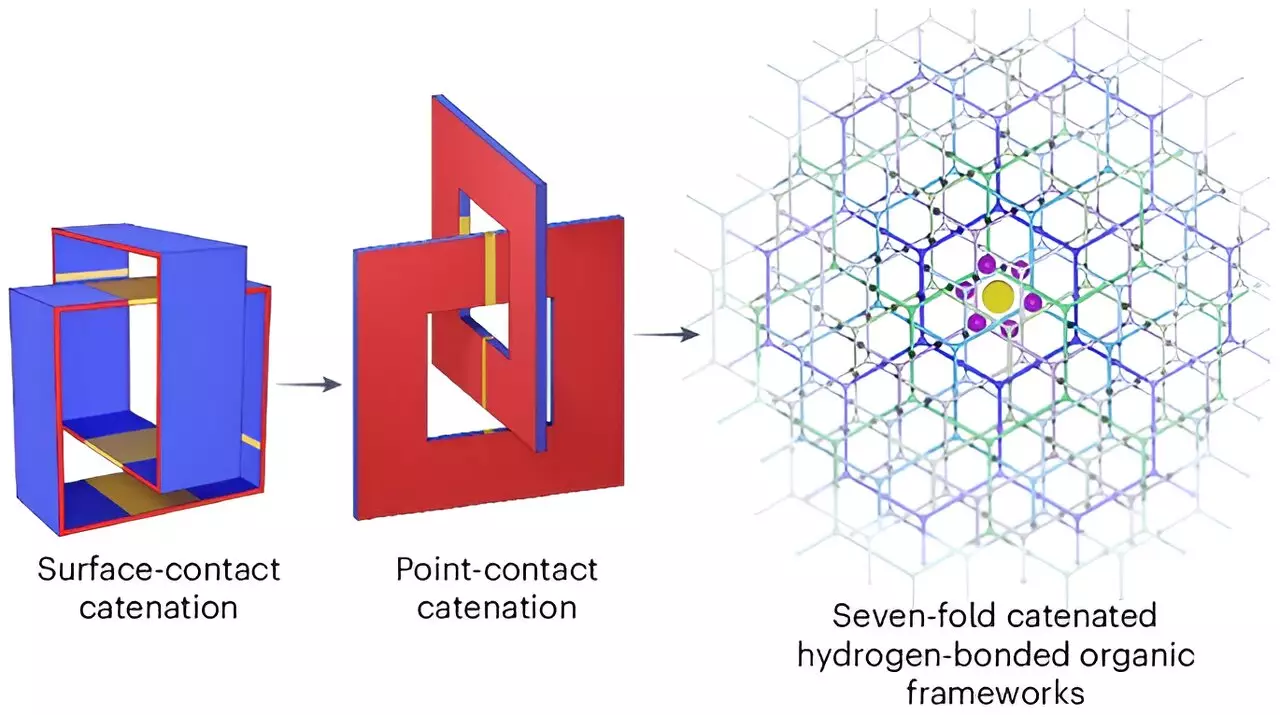The quest for efficient hydrogen storage solutions has gained momentum as the world seeks cleaner energy alternatives. A collaborative team of researchers from esteemed institutions, including the University of Hong Kong, Northwestern University, and Duke University, has made a significant breakthrough in this area. Their recent study, published in the prestigious journal Nature Chemistry, reveals the creation of a supramolecular material capable of compressing hydrogen for storage in a lightweight manner—a crucial step forward in resolving one of the primary challenges associated with hydrogen as an energy source.
Hydrogen offers substantial promise as a clean alternative to fossil fuels; however, its widespread adoption is impeded by the logistical dilemma of storage. Unlike gasoline, hydrogen occupies considerably more space, making its transportation and storage a complex undertaking. Researchers worldwide are acutely aware of this issue, and many have dedicated their efforts to innovating compression techniques that can enhance hydrogen’s practicality. Yet today, the developments achieved in this study signify a leap beyond previous attempts, targeting parameters established by the U.S. Department of Energy for optimum hydrogen storage.
The researchers set ambitious yet necessary benchmarks: first, that a material should be able to store at least 50 grams of hydrogen per liter; second, the hydrogen should constitute at least 6.5% of the material’s total weight. Many previous efforts have faltered at these hurdles, but this new material—constructed from interlinked organic molecules arranged in a honeycomb structure—successfully satisfies both criteria. The unique architecture of the material creates ideal-sized pores for hydrogen molecules to bond securely, resulting in meticulous and stable storage of the gas.
Remarkably, the newly developed supramolecular material stores a staggering 53.7 grams of hydrogen per liter, with hydrogen making up 9.3% of the total weight of the system. This successful demonstration not only illustrates the viability of this innovative storage solution but also highlights the potential to significantly alter the landscape of hydrogen usage in various applications, from fuel cells to transportation.
Despite its promising capabilities, the new material is not without drawbacks. One of the major challenges identified in the study is its requirement for cryogenic cooling to maintain efficacy. This necessity poses logistical hurdles for future commercial applications, as cryogenic systems are often bulky and costly to implement. Addressing this issue will be vital for transforming the laboratory success of this material into a commercially viable product that could ultimately support a sustainable hydrogen economy.
As the landscape of energy resources evolves, innovations like these become increasingly vital. The work of the Hong Kong, Northwestern, and Duke teams is paving the way toward resolving the longstanding issues around hydrogen storage. With continued research and development, the dream of a hydrogen-fueled world could soon be within reach, promising a cleaner, more efficient energy future.


Leave a Reply